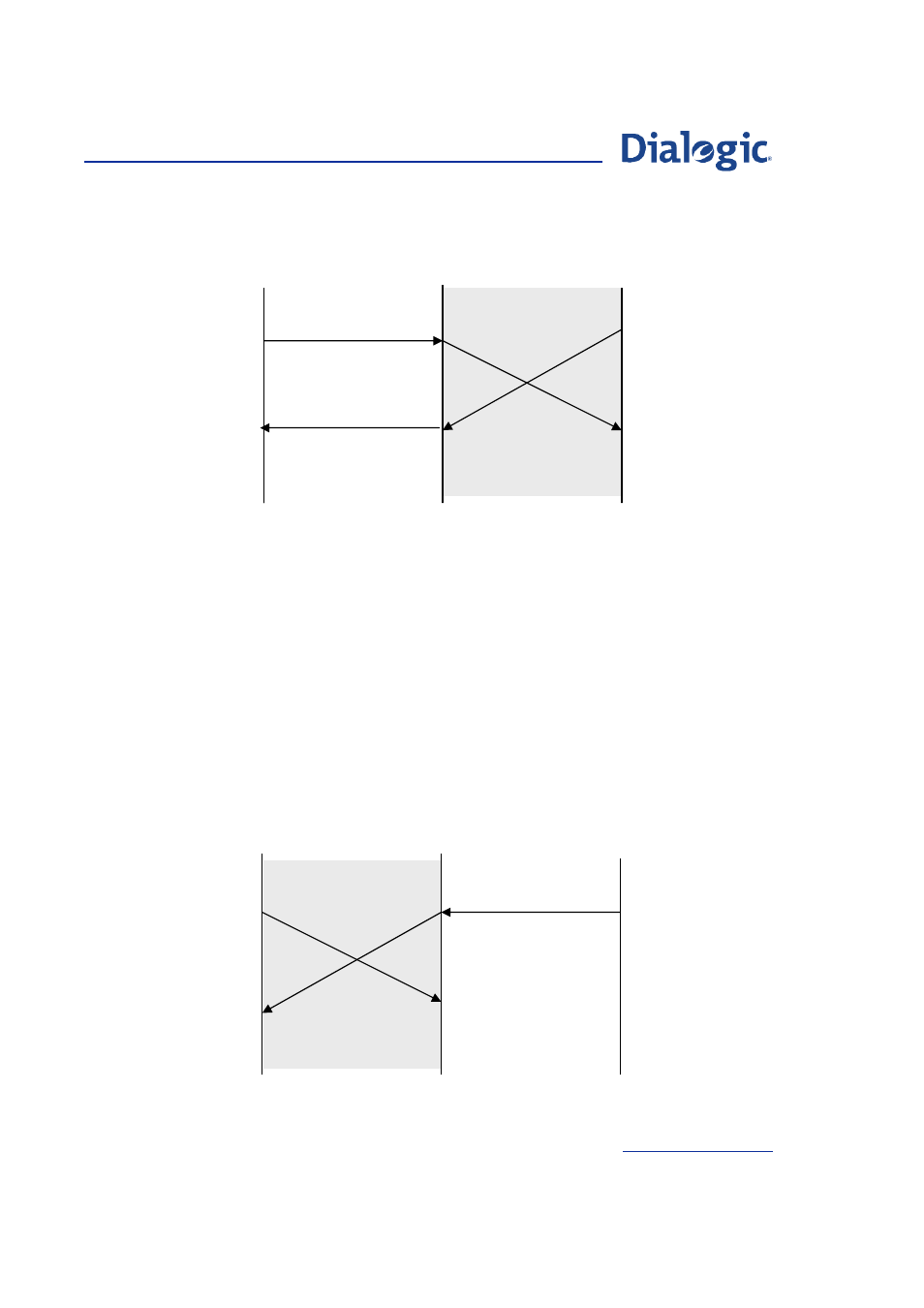Internal call collision, Figure 11, Figure 12 – Welltech Dialogic SS7 Protocols ISUP User Manual
Page 93: Example of an internal call collision

Dialogic
®
SS7 Protocols ISUP Programmer's Manual Issue 15
Figure 11. Example of an External Call Collision where this end of the Circuit is Slave
93
IAM
ISUP
MODULE
USER
APPLICATION
NETWORK
IAM
IAM
IAM
If this end of the circuit is slave, the application should always accept the
incoming call. Therefore, when an (outgoing) IAM is received from the
application and an (incoming) IAM is received from the network causing an
external call collision condition, the incoming IAM received from the network
will be passed to the application. The outgoing IAM will be discarded by the
far end, hence, it will not be necessary to release the outgoing call attempt.
If this situation occurs, it will be the user application’s responsibility to re-try
the outgoing call on another circuit.
Internal Call Collision
This is when the call collision occurs between the user application and the
ISUP module i.e. the application sends an IAM to ISUP at the same time as
ISUP sends an IAM to the application.
Figure 12. Example of an Internal Call Collision
ISUP
MODULE
USER
APPLICATION
NETWORK
IAM
IAM
IAM
Internal call collision is indistinguishable from external call collision where this
end is configured to slave. Therefore, when an internal call collision is
detected the user application should always accept the incoming call.